
A few weeks ago I was whisked up to Liverpool to see a preview of the new Tate exhibition Alice in Wonderland, which runs until the 29th January 2011. The Tate Liverpool is located in a warehouse on the edge of the rapidly evolving dockside area, now home to many a museum and art gallery.

Nyima 445 by Annelies Strba.

Nyima 438 (detail) by Annelies Strba.
Our tour began with a visit to the ground floor exhibition, which looks at the influence of Alice in Wonderland in modern art. Strba‘s floating girls certainly have the eery quality of an Alice-like dream, but Jason Rhoades‘ neon words provide a more tenuous link to the playful language of the novels.
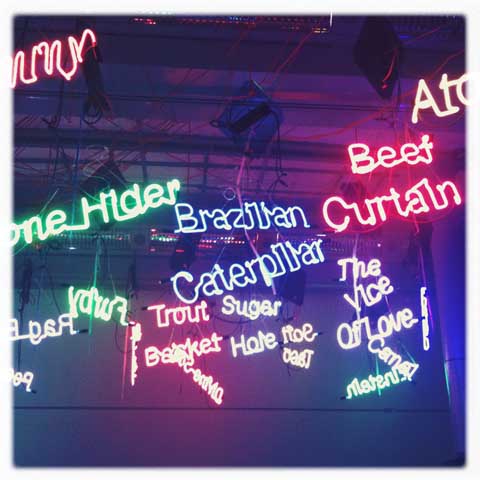
Tate Touche from My Madinah: in pursuit of my ermitage by Jason Rhoades.
On the way to the main top floor exhibition the walls are embossed with curving quotes from the artists who have felt the Alice influence. ‘I spent my childhood surrounded by animals, so I particularly enjoy the enchanted world of shape-shifting anthropomorphic beasts that Carroll brings to life,’ says Samantha Sweeting.
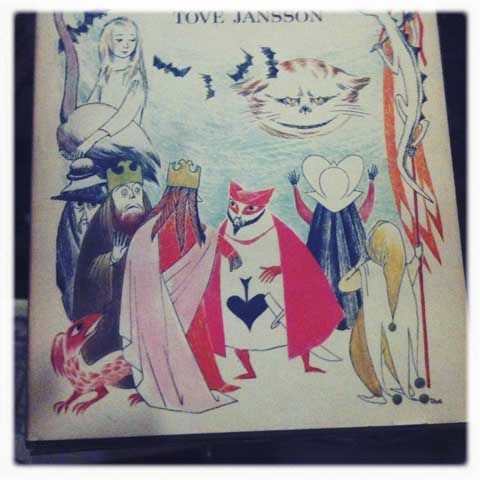
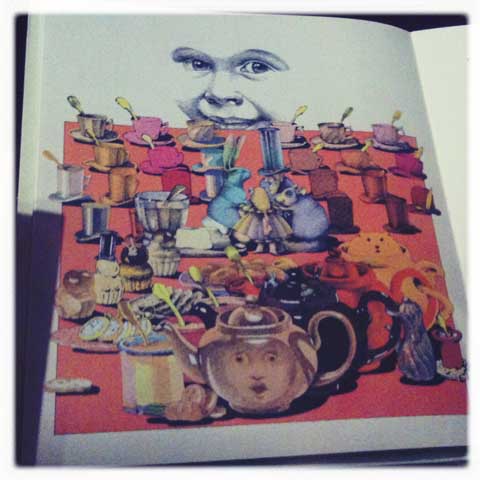



The exhibition starts with a room full of cabinets crammed with Alice in Wonderland books, including the original manuscripts that are worth a small fortune. The cabinets are busy but I enjoyed comparing the illustrative depictions of different artists, including Moomin maker Tove Jansson. A series of Mazzawattee tea tins caught my eye as well as a very fetching Alice furnishing fabric, printed in 1920 but still wonderful today.
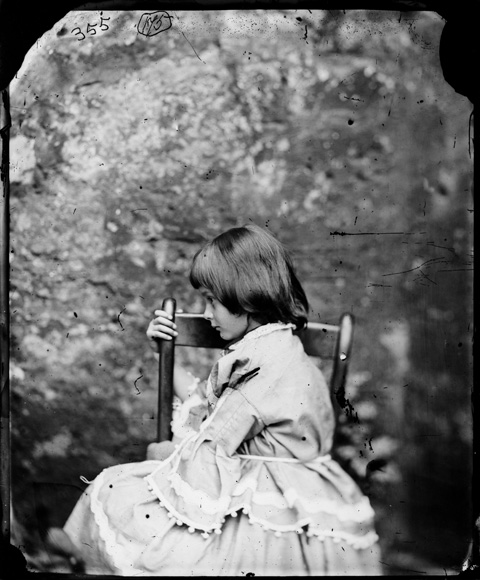
Alice Pleasance Liddell, Summer 1858.
Lewis was a great friend of the Romantic movement and it is postulated that he drew on this aesthetic to create his own book worthy heroine, who was of course based on a real little girl. The exhibition takes a tour through the real Alice’s life, as seen through Lewis Carroll‘s eyes, and includes some wonderful photographs which showcase his experiments in double exposure to achieve a dream like image.
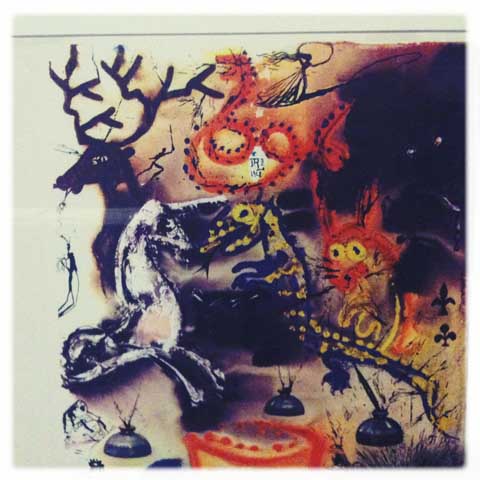
Alice in Wonderland illustrations by Salvador Dali (detail).

Dreaming Head by John Armstrong.

Le Grand Jour by Roland Penrose (detail).
I had no idea that Alice had such a claim on the Surrealist movement but here the direct links are laid out – Dali created a whole series of Alice inspired artworks and a proposed animation eventually became a film. The next room features a room devoted to works by the Children of Alice: 1930s British surrealist artists who experimented with ideas about the disruption of time and language to create new worlds. It’s hard to see a direct link back to the little girl in the photographs of the previous room, but it’s intriguing to learn about such obscure Alice connections.
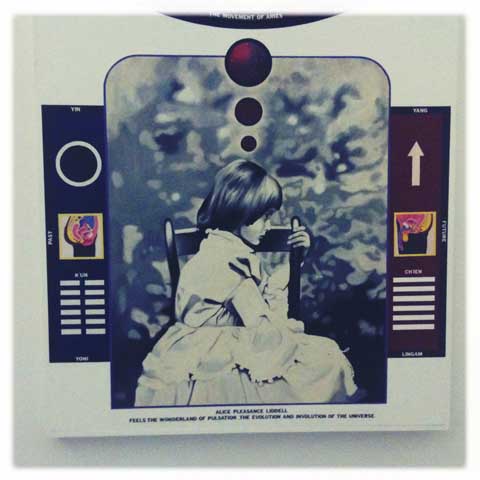
Alice Pleasance Liddell by Paul Laffoley (detail)
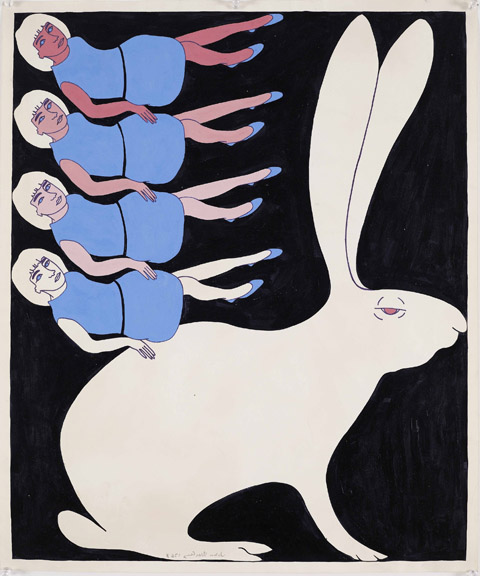
Falling Alice by John Wesley.
Alice influenced art was obviously big in the 1960s and Adrian Piper‘s typically psychedelic paintings are utterly evocative of the era. Yayoi Kusama even created an Alice themed Happening, with polka-dot painted naked people cavorting in Central Park for the cameras.

Pool of Tears by Kiki Smith.

Humpty Dumpty by Bill Woodrow.
Of course, it has not just been the content of the book which has inspired artists down the ages, but also the fantastical imagery of Alice and friends. Kiki Smith‘s Pool of Tears 2 depicts Alice swimming with a host of new beasts, and Bill Woodrow‘s sculpture recalls the precarious stance of Humpty Dumpty.
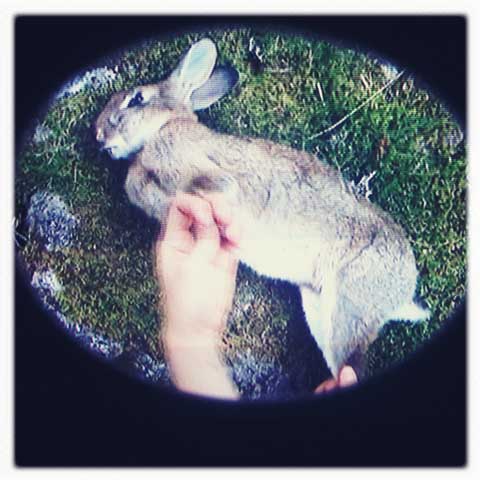
Run Rabbit, Run Rabbit, Run Run Run by Samantha Sweeting.
The exhibition finishes with a mix of contemporary installations, some of which are more Alice themed than others. Run Rabbit, Run Rabbit, Run Run Run shows the artist reanimating a dead rabbit with her hands. Gary Hill‘s Why do things get in a muddle? (Come on Petunia) is a curious film that was made in the 80s and features the peculiar relationship between an Alice figure and her father. This is an ambitious and interesting exhibition but one aspect remains under explored. Why was the real Alice so very special to Lewis?
The exhibition is accompanied by a lovely book, Alice in Wonderland Through the Visual Arts.
Categories ,60s, ,Adrian Piper, ,Alice in Wonderland Through the Visual Arts, ,Annelies Strba, ,Bill Woodrow, ,Charles L. Dodgson, ,Children of Alice, ,Dali, ,film, ,Gary Hill, ,Humpty Dumpty, ,Jason Rhoades, ,John Armstrong, ,John Wesley, ,Kiki Smith, ,Lewis Carroll, ,Mazzawattee, ,Moomin, ,Paul Laffoley, ,Pool of Tears 2, ,review, ,Roland Penrose, ,Romantic, ,Run Rabbit Run Rabbit Run Run Run, ,Samantha Sweeting, ,surrealism, ,Tate Liverpool, ,Tove Jansson, ,Why do things get in a muddle? (Come on Petunia), ,Yayoi Kusama
Similar Posts:
- Burning Bridges, Brick Lane Gallery
- Lucky’s London Exclusive Chocolate Cake Collection inspired by Alice in Wonderland: Honey Time
- That Which We Do Not Understand: Limited Edition Artists’ Book and Fine Art Prints Available to Buy Online NOW!
- Escape to Christmas Past by Good Wives and Warriors: Colouring Book Review and Artist Interview
- A Home For Alice
